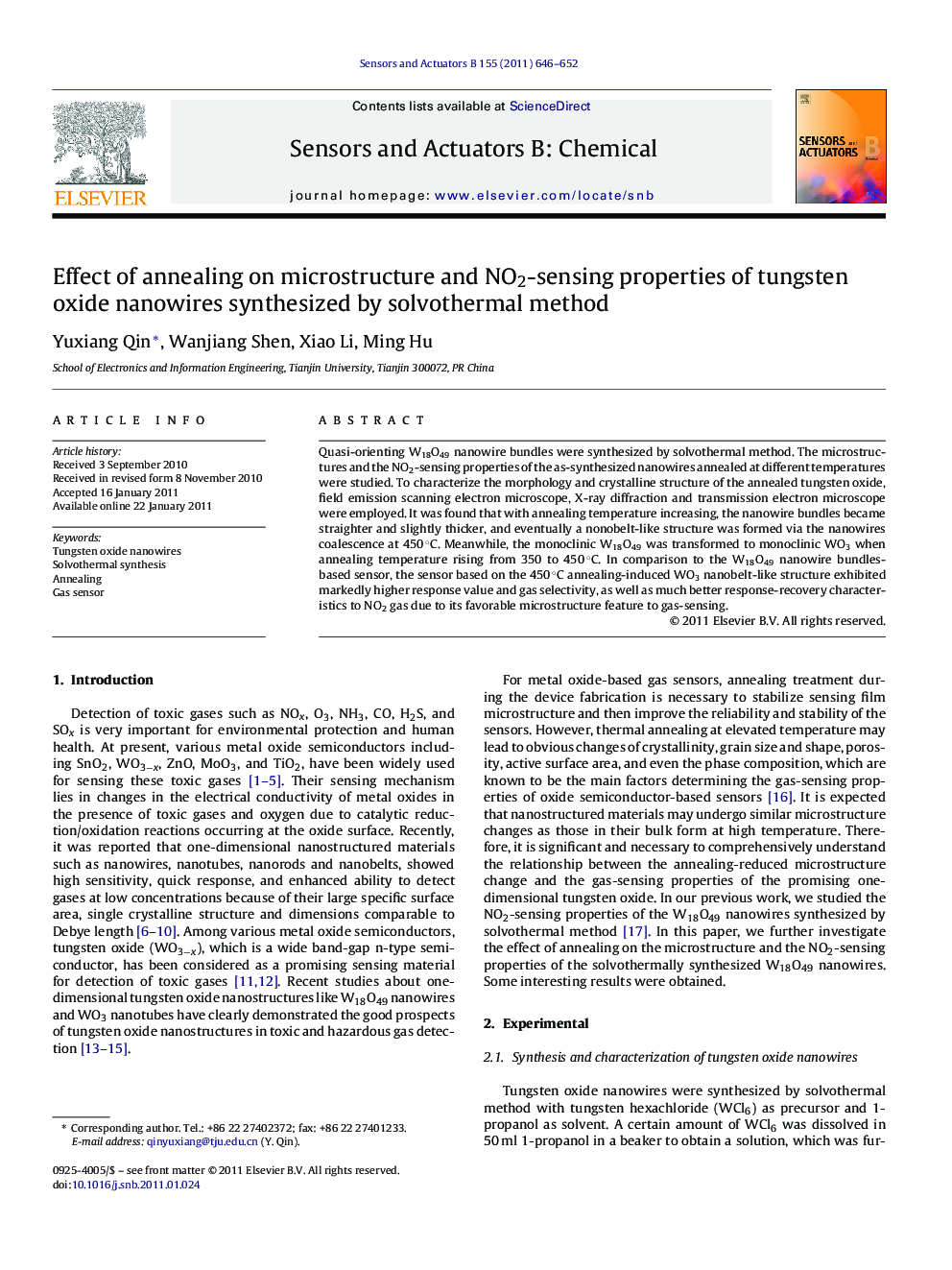| Article ID | Journal | Published Year | Pages | File Type |
|---|---|---|---|---|
| 744124 | Sensors and Actuators B: Chemical | 2011 | 7 Pages |
Quasi-orienting W18O49 nanowire bundles were synthesized by solvothermal method. The microstructures and the NO2-sensing properties of the as-synthesized nanowires annealed at different temperatures were studied. To characterize the morphology and crystalline structure of the annealed tungsten oxide, field emission scanning electron microscope, X-ray diffraction and transmission electron microscope were employed. It was found that with annealing temperature increasing, the nanowire bundles became straighter and slightly thicker, and eventually a nonobelt-like structure was formed via the nanowires coalescence at 450 °C. Meanwhile, the monoclinic W18O49 was transformed to monoclinic WO3 when annealing temperature rising from 350 to 450 °C. In comparison to the W18O49 nanowire bundles-based sensor, the sensor based on the 450 °C annealing-induced WO3 nanobelt-like structure exhibited markedly higher response value and gas selectivity, as well as much better response-recovery characteristics to NO2 gas due to its favorable microstructure feature to gas-sensing.
